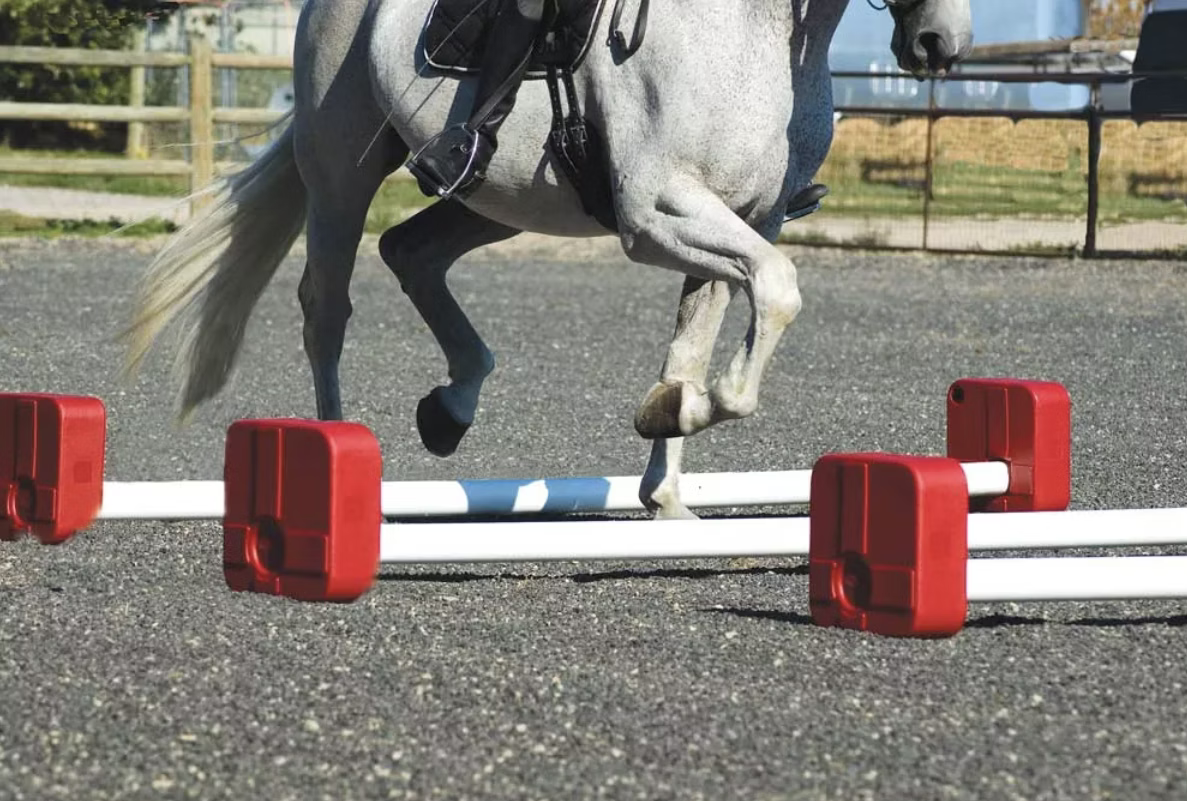Why Cavaletti Exercises Matter
Riding is a blend of connection, patience, and continuous growth. Riders always search for innovative ways to help their horses become more athletic, focused, and confident. Cavaletti exercises, built around lines of simple ground or raised poles, offer an understated but remarkably powerful training experience. These lightweight, adjustable obstacles can transform the footing in any arena or field into a purposeful training zone.
The versatility of cavaletti means their use is not limited to a particular discipline or experience level—every rider can incorporate them for better results. Anyone aiming to make their horse’s exercise more mindful and effective often seeks to buy used horse jumps or poles as a practical solution. Accessible and adaptable, cavaletti exercises can establish consistent rhythms, sharpen a horse’s footwork, and help resolve issues like laziness or hesitation. These routines can be a game-changer for those working on balance, stride length, or simply building a deeper connection with their equine partner.
Benefits For Horses And Riders
Cavaletti work offers numerous benefits for horses and riders. Horses experience increased flexibility, muscle tone, and awareness of hoof landings, leading to healthier animals and reduced injury risk. Regular exposure to cavaletti helps horses learn to carry themselves in a balanced frame, improving performance in any discipline. Riders benefit from improved posture, a stronger core, and coordinated aid use. Working over poles helps riders understand their horse’s rhythm and stride, making transitions smoother and communication clearer. Challenges like cavaletti foster teamwork, trust, and problem-solving skills, allowing both parties to connect and succeed.
Cavaletti Setups For Beginners
Starting with cavaletti doesn’t require a fancy setup or years of experience. The most rewarding progress often comes from the simplest routines. For newcomers, laying three or four poles flat on the ground and spacing them according to the horse’s natural stride quickly sets the stage. Whether in a training arena or an open field, the objective is to encourage straightness, focus, and smooth movement.
- Begin by leading your horse over the poles on foot, letting them look and step without pressure.
- Once comfortable, mount up, ask for a walk, and then a trot over the poles, seeking a steady pace.
- If the horse stumbles, resists, or rushes, reduce the challenge by shortening the row or going back to groundwork for a session.
- As confidence builds over time, consider gently raising the poles a few inches to create more lift and awareness.
Safety is the foundation of any good training session. Securely anchor poles to prevent rolling, check the ground for hazards, and never ask a nervous or green horse to do more than they’re ready for. The early positive experiences you create here pave the way for more advanced skills.
Progressing To Advanced Patterns
When a horse and rider have a handle on the basics, it’s time to shake things up. More advanced cavaletti work is limited only by the imagination and the partnership’s capabilities. Arrange poles on curves to ask for bend and balance, set poles in a fan to challenge adjustability, or create a combination that mixes trotting and cantering poles for more athletic development. Each new setup is a chance to stretch mentally and physically, prompting growth in hock action, topline strength, and straightness.
- Start with gentle curves before creating tighter patterns or zigzags. This helps horses learn to adjust their stride length and arc their bodies.
- Introduce one or two raised poles among flat ones, observing how your horse reacts and adjusting as necessary.
- Switch up between walk, trot, and canter poles, adding transitions between exercises to maintain alertness and engagement.
- Frequently change the sequence or height to keep both horse and rider from mentally “checking out.”
This approach increases physical capacity and requires focus and responsiveness. Riders develop quicker timing and more relaxed aids as they adapt to new situations. For competitive riders, this nuanced work often translates into improved scores and more consistent performances in the ring.

